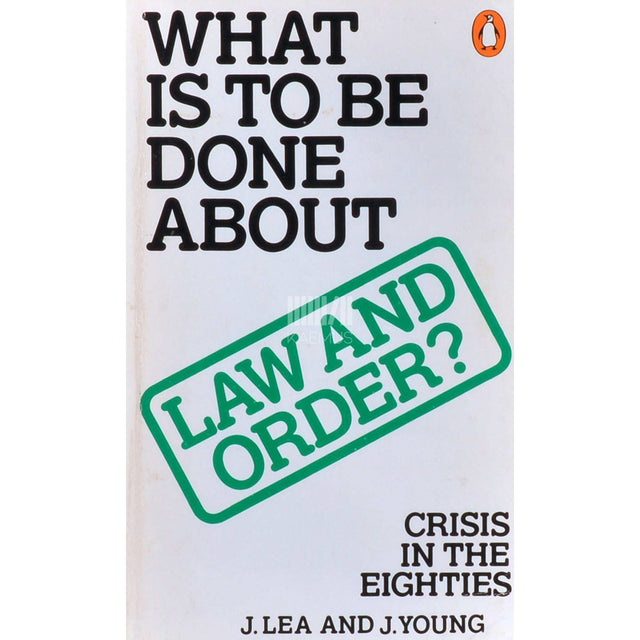What Is To Be Done About Law And Order?
What Is To Be Done About Law And Order?
Järeletulemise võimalusi ei õnnestunud laadida
- Seisukord: Hea (kasutatud)
- Märkused:
- Young |
- 284 lk | Pehmekaaneline | 110 x 180 mm
- ISBN: 9780140065930
- Keel: ingliskeelne
Confronting the Breakdown of Civic Order
In “What Is To Be Done About Law And Order?”, John Lea offers a sharp, unwavering analysis of the social forces that have eroded trust in traditional policing and judicial systems. Drawing on case studies from 1980s Britain—ranging from urban riots to contentious court rulings—Lea dissects the root causes of disorder, exposing how economic inequality, fragmented communities, and political neglect converge to undermine public safety. He challenges readers to question long-standing assumptions, insisting that true security cannot be achieved through force alone but through a deep understanding of social context.
Strategies Rooted in Community Engagement
Moving beyond critique, Lea advances a series of practical interventions designed to rebuild community bonds. He proposes neighborhood councils, restorative justice programs, and local patrols that prioritize dialogue over deterrence. Through vivid anecdotes, he illustrates how empowered citizens—when given a voice in dispute resolution—can transform tense neighborhoods into resilient, self-regulating environments. These visionary but attainable models place agency firmly in the hands of ordinary people rather than distant bureaucracies.
Policy Reforms and Institutional Renewal
Lea’s work culminates in a blueprint for systemic reform, calling for a radical reorientation of policing priorities and legal frameworks. He advocates reallocating resources toward social services, mental health support, and youth outreach, while restructuring law enforcement to be accountable to community review boards. By intertwining policy recommendations with compelling moral arguments, Lea makes an unassailable case that law and order depend as much on compassion and prevention as on punishment.
Envisioning a Just Future
Ultimately, “What Is To Be Done About Law And Order?” is a rallying cry for scholars, policymakers, and citizens alike to reclaim the promise of justice. Lea’s lucid prose and insightful proposals illuminate a path toward safer, more equitable societies—one where security grows from cooperation rather than coercion. This classic volume remains as urgent today as when first published, inviting each reader to become an active architect of social peace. . Author’s description.

